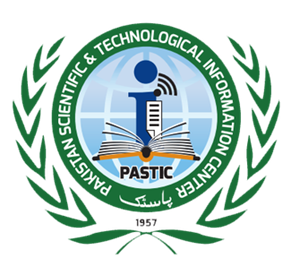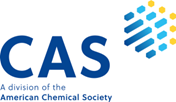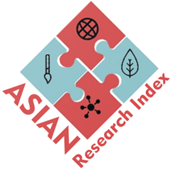Mental Health Awareness and Treatment: Bridging the Gap in Pakistan and Globally
Bridging Gaps in Mental Health: Awareness, Access, and Action
DOI:
https://doi.org/10.69750/dmls.02.01.091Keywords:
Mental health awareness, Treatment gap, Community Engagement, Technological Innovation, Policy IntegrationAbstract
Among the leading causes of disability worldwide, mental health disorders account for 14% of the global disease burden. The burden is the same in Pakistan, where an estimated 24 million people are living with mental health conditions including depression and anxiety[1]. However, mental health is one of the least researched areas in public health, both locally and globally. Progress continues to be held back by stigma, lack of awareness and lack of resources which persistently widen the treatment gap. This needs a paradigm shift especially in the realm of mental health awareness and access to treatment as they become central pillars of global and national health initiatives[2].
The Unyielding Stigma:
Stigma is an insidious barrier to help seeking behaviors and perpetuates this cycle of neglect. In Pakistan, cultural taboos and religious misconceptions of mental illness view it as a personal weakness or a result of supernatural forces, which discourages people from seeking professional help[3]. As in India, global studies show that fewer than 30 per cent of adolescents were able to identify depression, with just 1.3% identifying psychosis or schizophrenia as mental health conditions. Stigma not only prevents people from seeking care, but it also reinforces systemic inadequacies[4]. Reduction of stigma has been shown through educational interventions. In Pakistan, 'Taskeen' (mental health awareness campaign) have tried to normalize conversations around the mental health. In U.S. colleges, targeted education campaigns have had a big impact: attitudes towards mental illness have become much more positive, people feel less embarrassed, and they think it's less of an illness you can't cure. While such efforts need to be scaled up to reach rural and underserved populations, however, they are also addressing some of the most pressing concerns of the modern world[5].
Addressing the Treatment Gap:
Despite this, there is an alarmingly high treatment gap—how much of the population living with mental illness receives care—of over 76% to 85% in low- and middle-income countries (LMICs) including Pakistan. Among the contributing factors are a disastrous dearth of trained professionals, with only one psychiatrist for every 100,000 people in Pakistan, a lack of integration of mental health into primary care, and the broken nature of service delivery[6]. These gaps have been addressed by Pakistan’s National Mental Health Programme as well as community-based initiatives. Community health workers, including "Lady Health Workers" trained to deliver mental health interventions in low resource settings, have successfully been task shifted for mental health[7]. Technology globally leads to scalable solutions for improved access and outreach, i.e. from telemedicine platforms like 'Sehat Kahani' in Pakistan to app-based tools. Mental health awareness is a cornerstone of education. In Pakistan, inclusion of mental health literacy into school curricula may help to normalize talk about mental health from a young age. Public figures speaking out about their mental health challenges, such as cricket star Shoaib Akhtar doing so, have shown how media can influence the way people think[8].
Higher education institutions also have a critical role to play globally. Researchers have also found that college course work in abnormal psychology increases awareness, as well as decreases stigmatization. Such programs can be expanded to all disciplines, creating a culture of understanding and early intervention[9].
Building Sustainable Solutions:
The path forward requires a multi-pronged approach:
- Policy Integration: Mental health must be integrated into primary health care frameworks, and universal access must be provided in line with the guidance for governments. Mental health should be another non communicable disease added to Pakistan’s health policy[10].
- Community Engagement: Community involvement to challenge stigma and culturally sensitive care should be considered a priority for grassroots programs. In Pakistan, one can reach out to religious leaders and others local influencers in order to bridge the cultural barriers[11].
- Technological Innovation: Digital platforms and artificial intelligence can help closed the service delivery gap and offer data driven insights for policy making. For instance, platforms like “DoctHERS” in Pakistan have helped offering mental health services through telemedicine[12].
- Funding and Research: Mental health research investment, particularly in LMICs, is essential to the production of context specific solutions and the scaling of evidence based interventions[11].
CONCLUSION
Once, when the WHO’s first Director-General, D r. Brock Chisholm, said: “Mental health is the first step toward true physical health.” This, of course, is true to this day, especially in Pakistan where mental health challenges intersect so closely with societal, economic and cultural factors. There has been incremental progress, but the global and national communities have not fully recognized to what extent this scale of a mental health crisis. It is imperative that attention is put on awareness combined with robust and sustainable interventions. We need mental health to go beyond its current marginality and take up a place as a core domain of global and national health strategy. Stigma can only be dismantled by governments, policymakers, civil society, and investment in scalable solutions that achieve equitable access to care. If societies prioritize mental health, it helps not just individuals but also the social and economic fabric of societies. The time to act is now. We can only bridge the gap between the now and a healthier, more inclusive future if we do it collectively.
Downloads
References
Keynejad R, Spagnolo J, Thornicroft G. WHO mental health gap action programme (mhGAP) intervention guide: updated systematic review on evidence and impact. Evidence Based Mental Health. 2021;24(3):124.doi: 10.1136/ebmental-2021-300254
Naeem M, Sabba K, Fatima Rahman R, Saba T, Sundus T, Mohamed Hassan E, et al. Examining the tapestry of mental health crises in low- & middle-income countries: an intercontinental analysis of the contributing factors and instructive approaches". Journal of University Medical & Dental College. 2023;14(4).doi: 10.37723/jumdc.v14i4.972
Noorullah A, Asad N, Pirani S, Iqbal S, Khan MM. Mental Health Care in Pakistan. In: Arafat SMY, Kar SK, editors. Access to Mental Health Care in South Asia: Current Status, Potential Challenges, and Ways Out. Singapore: Springer Nature Singapore; 2024. p. 113-35.doi: 10.1007/978-981-99-9153-2_7
Hamdani SU, Huma Z-e, Wissow LS. Technology-assisted task-sharing to bridge the treatment gap for childhood developmental disorders in rural Pakistan: an implementation science case study. Implementation Science Communications. 2022;3(1):99.doi: 10.1186/s43058-022-00343-w
Dayani K, Zia M, Qureshi O, Baig M, Sabri T. Evaluating Pakistan’s mental healthcare system using World Health Organization’s assessment instrument for mental health system (WHO-AIMS). International Journal of Mental Health Systems. 2024;18(1):32.doi: 10.1186/s13033-024-00646-6
Javed A, Lee C, Zakaria H, Buenaventura RD, Cetkovich-Bakmas M, Duailibi K, et al. Reducing the stigma of mental health disorders with a focus on low- and middle-income countries. Asian Journal of Psychiatry. 2021;58:102601.doi: https://doi.org/10.1016/j.ajp.2021.102601
Chachar AS, Mian AI. Debate: Bridging the gap – role of nonspecialists in child and adolescent mental health care. Child and Adolescent Mental Health. 2024;29(4):399-401.doi: https://doi.org/10.1111/camh.12736
Khan Z, Qureshi O, Pasha A, Majid O, Saleem S, Fearon P, et al. Exploring biomedical and traditional care pathways for people with psychosis in Karachi, Pakistan. Frontiers in Psychiatry. 2023;14.doi: 10.3389/fpsyt.2023.1086910
Maqsood A, Gul S, Zahra T, Noureen N, Khattak A. From face-to-face to screen-to-screen: exploring the multifaceted dimensions of digital mental health care. Frontiers in Psychiatry. 2024;15.doi: 10.3389/fpsyt.2024.1413127
Pringle B, Williams M, Collins PY. Evidence for Action: Stimulating Research to Address the Global Mental Health Treatment Gap. In: Okpaku SO, editor. Innovations in Global Mental Health. Cham: Springer International Publishing; 2021. p. 63-88.doi: 10.1007/978-3-030-57296-9_94
Wainberg ML, Scorza P, Shultz JM, Helpman L, Mootz JJ, Johnson KA, et al. Challenges and Opportunities in Global Mental Health: a Research-to-Practice Perspective. Current Psychiatry Reports. 2017;19(5):28.doi: 10.1007/s11920-017-0780-z
Rathod S, Pinninti N, Irfan M, Gorczynski P, Rathod P, Gega L, et al. Mental Health Service Provision in Low- and Middle-Income Countries. Health Services Insights. 2017;10:1178632917694350.doi: 10.1177/1178632917694350






















